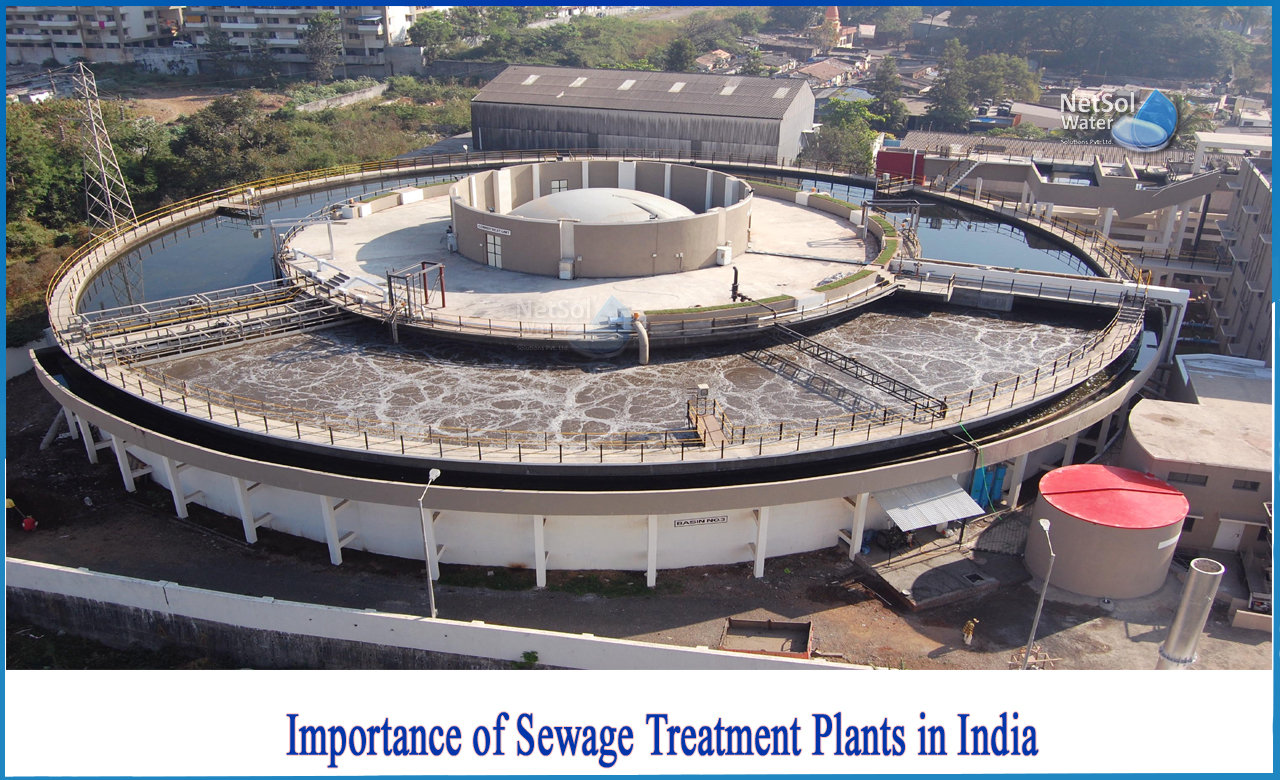What is importance of sewage treatment plants in India?
Sewage and sewage treatment science and technology have advanced over the last few decades. The world's population is growing exponentially, seeking natural resources from unpolluted water such as fresh rivers, wells, and groundwater. Ultimately, natural resources will decline.
This has shifted the focus to controlling pollution and minimizing the impact of pollution. Currently, it is not possible to dispose of wastewater in land or water bodies without proper and effective treatment measures.
India has 4% share of total fresh water available on earth and has second largest population in the world as well as highest population density in its Gangetic plains as well as other part of country. So, to fulfil the basic requirement of water for its residents, India must move towards sustainable use of water, water recovery and water re-use.
What has driven new technologies for wastewater treatment and potential reuse? What is the story?
Scientific knowledge of aquatic microorganisms and ingredients for the benefit of the population and the environment.
How is wastewater defined?
Wastewater includes liquid and water-based waste from household, industrial, commercial and commercial activities, as well as rainwater and other soil erosion.
In addition to toxic compounds, wastewater can also contain very high concentrations of organic and inorganic pollution, pathogenic microorganisms.
If sewage or waste is discharged untreated into a river, it causes serious pollution in the aquatic environment. Due to poor water quality, the movement's water cannot be used for future water absorption functions.
Sustainable Sewage Treatment Technology:
It applies science and technology principles for treating sewage to remove or reduce pollution and then water or other environments without the ability to self-clean the environment. Reduce pollution to the appropriate stage before discharging.
Removal and disposal of the resulting solids and other by-products is an integral part of the overall process. Looking back in our past, sewage technology has evolved from sewerage and landfill to non-relief collection and disposal, pre-disposal collection and treatment, and pre-reuse collection and disposal solutions. Evidence of the use of water for street waste collection and subsequent cleansing of waste by open sewers was found throughout the ancient Roman Empire.
Development of the sewer began in London in the early 1800s. In 1843, Hamburg's primary sewage system was officially designed by British engineer Lindley (Anon, 2011). In the 17th century colonial United States, drainage management of domestic waste water consisted of toilets with floor-level drains. The toilet was drained into a sewage pool or sewer. Abortion and cesspool created in this way did not cause many problems in low population densities (Duffy, 1968).
However, as the population grows, the need for technologically mature equipment for wastewater treatment in large cities has become increasingly apparent. Scientists and public health authorities have begun to understand the link between disease outbreaks and wastewater pollution in drinking water.
Odour obstruction, outbreaks of cholera and other illnesses, and various public health considerations are considered and thus sewage treatment plant is important for any area.
Before latest technology was used,sewers were used to transport untreated wastewater to streams outside the community. Diluting wastewater with stream water was the main way to reduce pollutants. These were known as water truck sewers.
Present scenario of STPs in India:
India produces 72,368 MLD (1 million litres per day), while the installed capacity of STP was known to be 31,841 MLD (43.9%). The five states and Union Territory (UT) Maharashtra, Gujarat, Uttar Pradesh, Delhi and Karnataka account for 60% of the country's total installed sewage capacity. There are no or very less sewage treatment facilities in Arunachal Pradesh, Andaman and Nicobar Islands, Lakshadweep Islands, Manipur, Meghalaya and Nagaland. Chandigarh ranks first in the total amount of wastewater produced.
Reuse of treated wastewater:
It is the largest in Haryana, followed by Pondicherry, Delhi and Chandigarh. In many state government political plans, it wasn't that important.
The treated wastewater can be reused for horticulture, irrigation, cleaning work (roads, vehicles, and trains), firefighting, industrial cooling, toilet flushing, and horticulture. This can reduce the demand for water from sources such as rivers, ponds, lakes and groundwater sources. Thus it very important to treat the waste water from domestic, commercial and industrial sector to save freshwater sources as we are already facing water crises.




